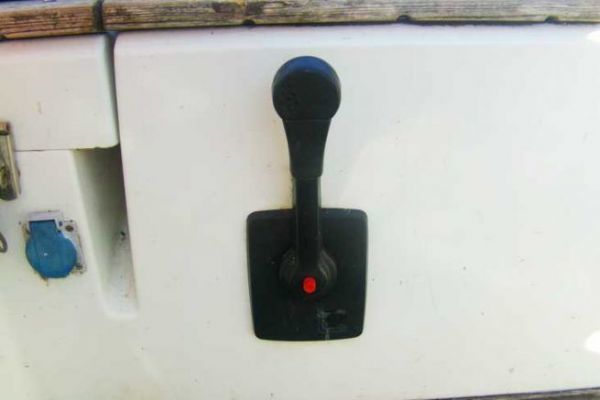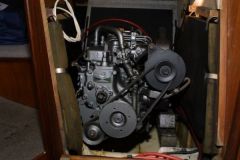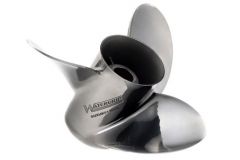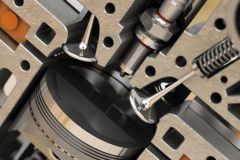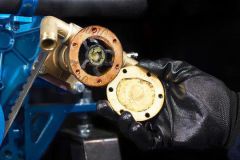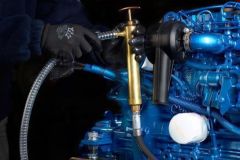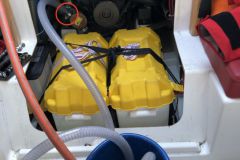A boat that's become impossible to steer
At the entrance to the channel, just at the start of the gale and before it became too strong, the crew of Croque soleil prepares to return to port. They start the engine, lower the sails. When it's time to clutch forward: nothing. No control. What can they do? The engine doesn't react! A broken or seized cable? No time to procrastinate. Only one solution: go directly to the cables.
That's how Georges found himself down in the engine compartment, bent over to reach the shuttle control with one hand and the throttle control with the other.
Janine, who is at the helm, shouts to him: "more gas, the wind is picking up. And get ready to reverse, we'll be there soon." .
The swell rising in the channel is making his heart race: his head is down, his stomach is pressed against the rocker cover, and his leg is almost cramping. But it's almost there, he says to himself.
They had planned a cruise aboard their ship for the weekend, returning on Sunday as was their custom. The gale forecast for Sunday evening didn't prevent them from enjoying the weekend, and they've known worse ones to spoil their desire for this escapade.
- Slow down, we're in the harbor.
- Ok
- Ready to turn back the clock?
- Paré
- Full throttle back!
He reverses the engine with his left hand on the shuttle, and with the other hand turns up the throttle. The fuel is injected in large quantities and in good time into the combustion chamber, where it ignites on contact with air and compression pressure. The engine explodes and the piston is pushed back to its maximum speed.
VROUUMMMMM
"Stop everything! This is it!"
Docking went well. The boat responded well to the reverse gear. It stopped just before the pontoon.
Check and maintain the joystick and its cables
Control lever malfunction is an all-too-common problem. To check that it's working properly before setting off, it's important to operate it in all possible positions and make sure there are no hard spots. A more thorough check can also be carried out occasionally. This involves removing the protective cover, if fitted, to gain access to the control mechanism.
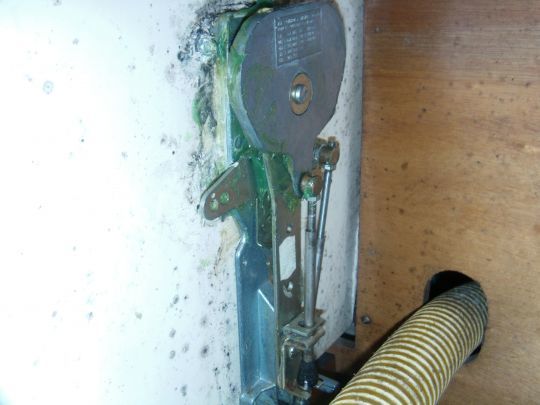
Check that the cable adjustment locknuts are tight, and that the locking pins are in good condition.
Control mechanisms must be sufficiently greased to ensure correct operation during maneuvers.
The clutch release button is also often a source of lever failure. You need to operate it regularly, and if it starts to jam in any position, you need to intervene. Depending on the type of lever, greasing the mechanism is not always enough to solve the problem. You'll have to replace it.
If the cables are showing signs of weakness, because the protective sheath has rubbed against the motor and is starting to corrode, they should be replaced.
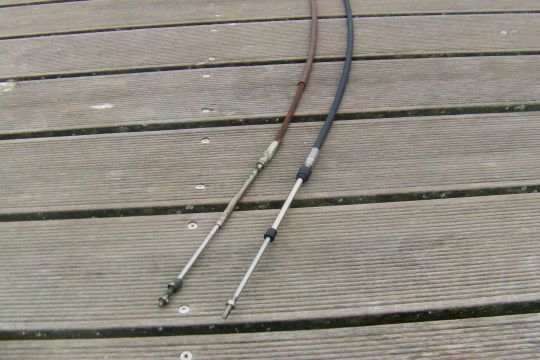
Protecting the joystick
Protecting the order is extremely important. Controls are often housed in dusty cabinets. This dust sticks to the grease, and ends up jamming the cables and mechanisms even more, rather than making their work easier.
These lockers are also used to store a whole host of other items. Fenders, mooring lines, spare anchors... Objects which, in the rhythm of the waves, can damage the control system or get caught in the mechanism. If you don't have one, we strongly recommend that you install a suitable protective cover.
Maintain boat control in the event of joystick failure
However, in the event of a control failure, it is possible to retain control of the boat. This maneuver can, for example, be carried out by two people to return to port. To do this, one person must have access to the machine, and be able to operate the controls directly on the motor and reverser. This will short-circuit the malfunctioning joystick.
To manually accelerate the engine, disconnect the cable from the injection pump and activate it. This allows you to control engine speed.
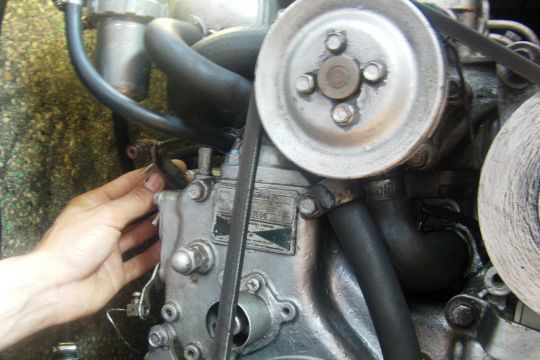
And to manage the ship's movement, you need to disconnect the control cable from the reverser to operate it manually. There are 3 positions: forward, neutral and reverse.
Maintaining your engine control system and knowing how to manage it manually can save you from many potentially catastrophic situations when sailing.

 /
/ 